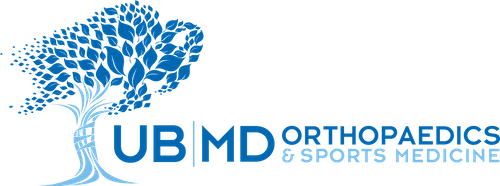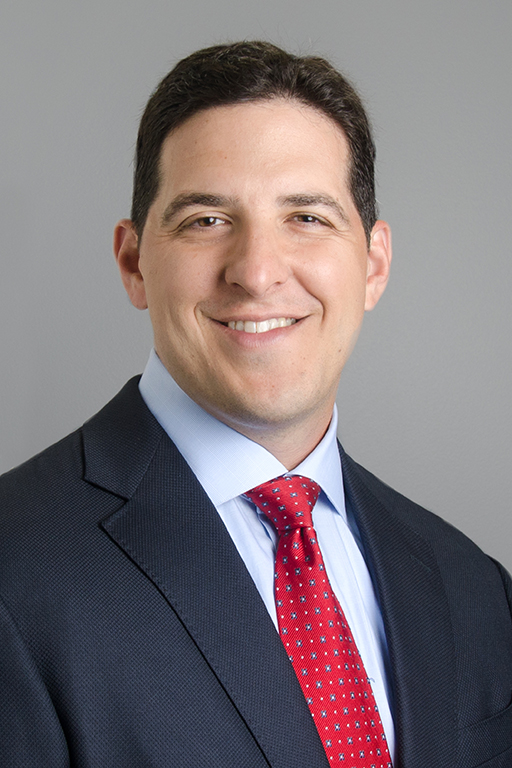At UBMD Orthopaedics & Sports Medicine, we’re proud to not only offer the latest in treatment and diagnostic approaches for the care of our patients, but also to help educate and train the next generation of doctors and physicians.
Recently, our own Dr. Matthew DiPaola, working with Dr. Felasfa Wodajo, a colleague in Virginia, co-authored and edited a new textbook – “3D Printing in Orthopaedic Surgery,” available now from Amazon – that’s helping explain the cutting-edge medical science of 3D printing in the field of orthopaedic surgery.
Basics of 3D Printing
If you wanted to build a perfect replica of an object, how might you go about doing so?
Traditional manufacturing methods rely on “subtractive” methods. That is you start with a block of material and then remove the unwanted material until you leave the remaining desired structure.
3D printing technology is different. 3D printing helps us build objects from the bottom up. Much like an inkjet printer deposits ink on a piece of paper based on the instructions fed to it by your word processing program, a 3D printer deposits building material into a three-dimensional structure to build an object based on a set of computer instructions.
Engineers have applied 3D printing technology in many fields for over 30 years. Recently the growth of 3D printing has accelerated considerably and experts are turning to this technology to help solve host of unique medical problems. Orthopaedics is a field that is taking advantage of the latest 3D printing technology to better deal specifically with three-dimensional bone anatomy problems.
To create three-dimensional models of bone structures, doctors start by getting scans of the affected area of the body. Most commonly this is done with a CT scan. CT scans are commonly used in orthopaedic practice to help surgeons better understand complex bone anatomy. The results of this scan are then analyzed with software to create a digital version of the body part and process it through a 3D printer to create a tangible reproduction.
3D printing technology offers many potential benefits, including the ability to not only create anatomical models, but also surgical guides and jigs that are designed to help make surgical targeting more accurate.
“We are starting to use this technology more and more, specifically in the area of targeting jigs and guides to help us execute more precise surgical plans,” said DiPaola. These tools can help doctors get the most complete picture of the injury allowing for a more accurate and effective approach to procedures that can improve outcomes and minimize risks.
However, 3D technology is no substitute for skills and experience.
“There is always a learning curve for trying any new technology,” said DiPaola. “A surgeon should be competent in the most reliable techniques for performing any given surgery before using 3D printed guides or jigs so that he understands how to adjust if the guides are not fitting the way that they were intended.”
New Technologies, New Approaches
While 3D printing is only now coming into mainstream orthopaedic practice, it’s being used to some degree today in nearly every aspect of orthopaedic medicine, says DiPaola. For example, 3D printing can be used to better understand and plan around complex deformities such as scoliosis or difficult-to-visualize anatomical structures such as bone defects of the shoulder socket. It also works well for unique problems like complex ankle and wrist fractures and offers a unique training and strategy tool for operative planning.
Big Benefits for Physicians, Students and Patients
3D printing technology has the potential to not only alter practices in the operating room, but to also enhance both patient and student education as well.
In addition, 3D printing can help young doctors in training better visualize unusual bone structures and get a more comprehensive look at altered anatomy in three dimensions. Plus, by incorporating 3D printing into the curriculum, these future orthopaedic surgeons become familiar with the technology from the start, allowing for a greater understanding of its benefits and applications in their future careers.
Future Uses for 3D
Work with 3D printing is well on its way to becoming mainstream medicine, not only within the realm of orthopaedic conditions, but in other aspects of health care as well. As DiPaola notes, the future is hard to predict, but we know from the progression of the personal computing revolution that technology often changes and amplifies in adoption and normalcy once it gets in the hands of the everyday user. The potential of 3D printing is limited only by access and once more fully available, new users are bound to discover many new applications.
Dr. DiPaola focuses his practice on shoulder and elbow surgery and is seeing 3D printing shape techniques in shoulder replacement surgery but looks forward to even more far reaching possibilities. “I am personally intrigued by the possibility of making 3D-printed biological structures, perhaps to fill soft tissue voids or replace organs,” said DiPaola. “This is a use for which 3D printing is particularly well suited.”
Teaching the Future of Orthopaedic Medicine
Working with Dr. Felasfa Wodajo, an orthopaedic oncologist at Virginia Cancer Specialists who has worked extensively with 3D printing and its uses in cancer patients, this new textbook was written to make the technology more accessible and available to existing orthopaedic surgeons and students. The text discusses basic principles of engineering, software, costs and legal considerations, and serves as a consolidated resource of all the latest available information on this new technology in the orthopaedic field.
See how the physicians can help with your bone, joint or muscle issue by booking an appointment at UBMD Orthopaedics & Sports Medicine. Call 716.204.3200 to schedule a visit today.

